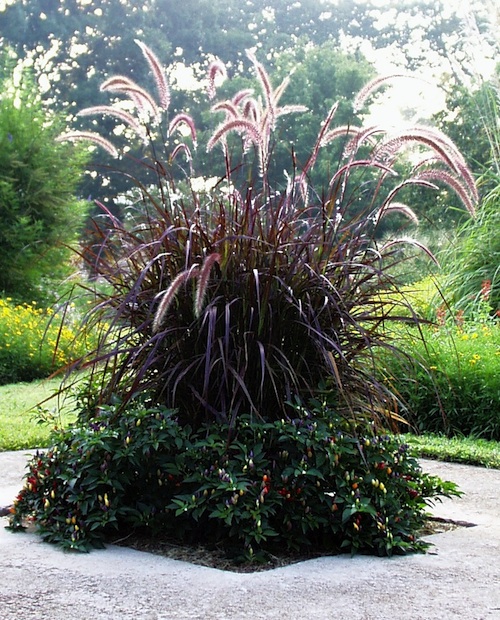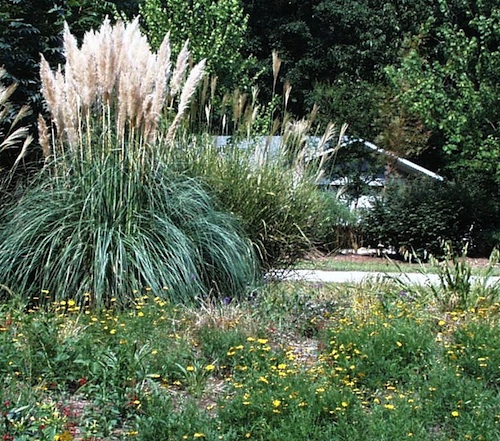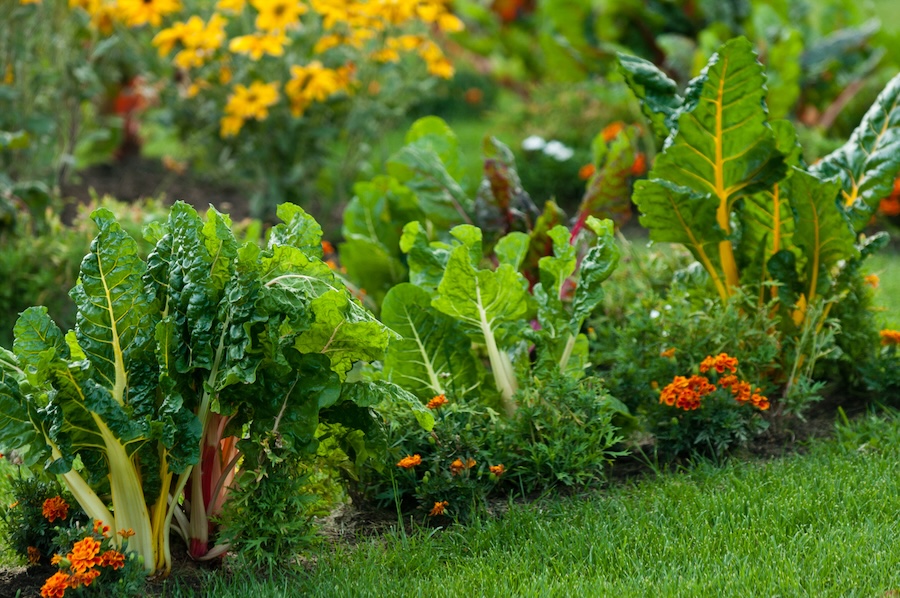Pampas grass can be a very attractive and functional plant when used correctly in landscapes. Because it grows rapidly into a massive plant, pampas grass is an excellent screening plant for sunny locations. It can also be used as a specimen plant in isolated locations in large lawns.
A large perennial grass native to Brazil, Argentina and Chile, pampas grass (Cortaderia selloana) grows in large clumps 8- to 10-feet high. Unfortunately, pampas grass is often incorrectly used as a foundation plant. It is purchased from a nursery as a small plant and planted close to homes. The plant will look great the first year, but after several years it grows so large that it blocks the view of the home.
In addition to blocking views, pampas grass can cut those who come in contact with it. When selecting sites for pampas grass, consider the danger to passersby from contact with the very sharp, saw-like edges of the leaves.
Care
Pampas grass should be planted where it will receive full sun most of the day. In shady areas, it will grow very slowly and usually will not produce plumes.
Once pampas grass is established, it is practically trouble free. There is no need to spray for insects or any other pests. It will grow in most soils and responds favorably to frequent fertilization. To obtain good growth and plume production, pampas grass should be fertilized four times a year with a complete fertilizer (10-10-10) at a rate of 2 pounds per 100 square feet.
Before new growth begins in the spring, prune away any brown leaves and dead materials that accumulate at the plant base. If winter is particularly harsh and a great deal of browning has occurred, the entire plant can be rejuvenated by cutting it back to within 2 feet of ground level with lopping shears or a chain saw. Move slowly and wear jeans, a long-sleeve shirt and gloves when pruning pampas grass. Again, the sharp leaf blades will cut hands, arms, legs and other unprotected parts of the body.
Plumes
In late summer, pampas grass produces silvery white or pinkish silken plumes that raise the plant’s height to 12 feet. Female plants produce plumes that are broad and full due to silky hairs covering the tiny flowers. Male plumes appear narrow and thin because of the absence of hair on the flowers. The difference in appearance is not obvious at first glance.
Pampas grass plumes are highly prized for indoor decorations. Plumes used for decorating should be cut as soon as they have fully emerged. They can be used in dried arrangements immediately after harvesting or dried by hanging upside down for later use. If mature plumes are brought indoors, their delicate fluffy flowers can become a bigger problem than a shedding dog or cat. To prevent shedding, spray mature plumes with hair spray.
Striking feathery plumes combined with large, graceful clumps of foliage make pampas grass an interesting addition to most landscapes when planted in the right location.





